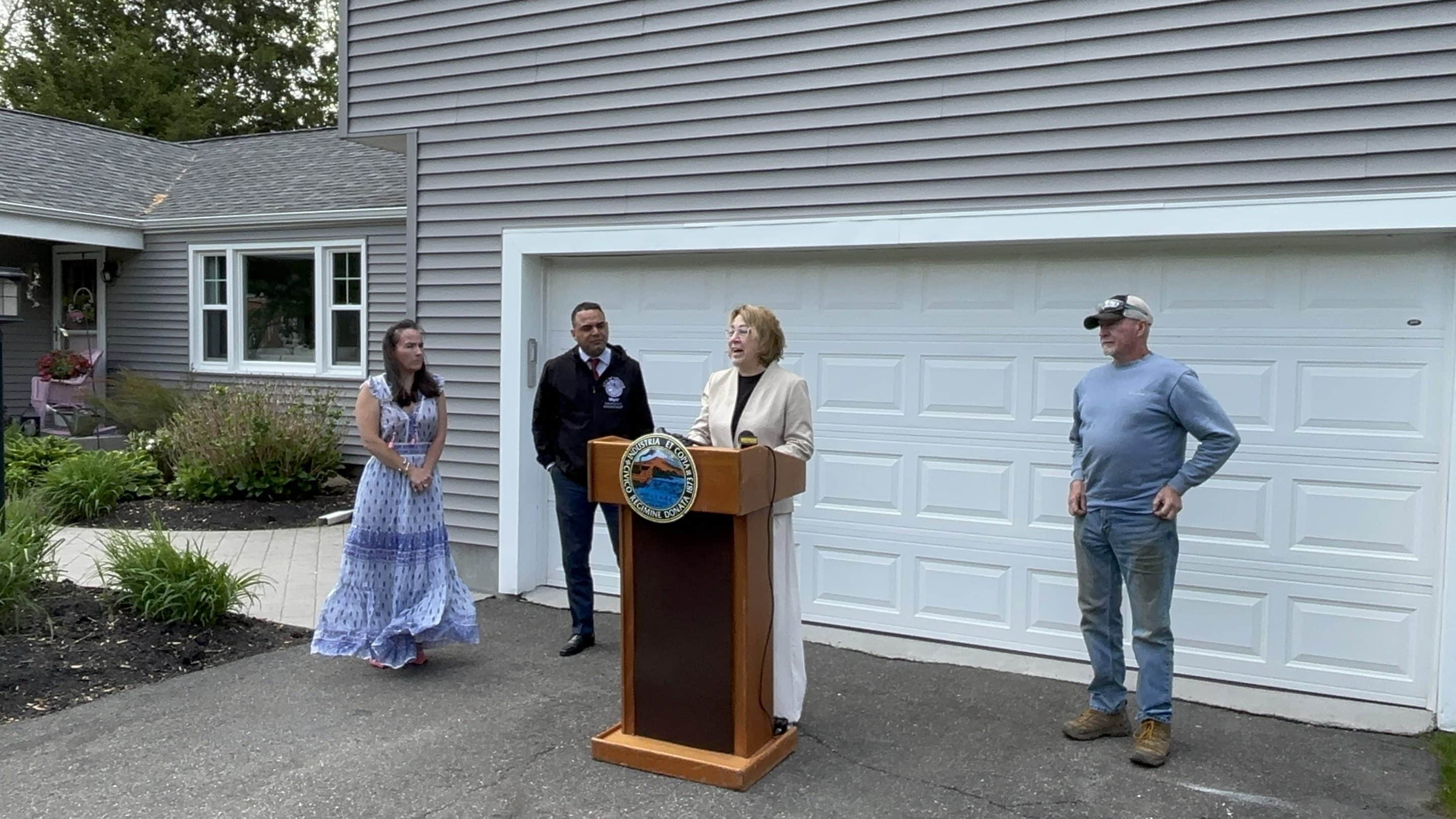Pictured, left to right, are Assistant City Engineer Victoria Houle, Mayor Joshua Garcia, interim DPW Director Mary Monahan and City Councilor Mike Sullivan at the sewer separation project press conference.
Reminder Publishing photo by Tyler Garnet
HOLYOKE — Mayor Joshua Garcia, interim DPW Director Mary Monahan and Assistant City Engineer Victoria Houle hosted a press conference on May 19 to discuss the River Terrace Sewer Separation project Phase A.
The purpose of this project is to separate the existing combined sewer flows within Holyoke’s combined sewer overflow Area 21A, also known as the River Terrace Area.
The overall combined sewer overflow Area 21 can be broken into two subareas, Area 21A and Area 21B, which are both directed to the combined sewer overflow 21 regulator before being directed to the city’s wastewater treatment facility on Berkshire Avenue.
A combined sewer system collects rainwater runoff, domestic sewage and industrial wastewater into one pipe.
Under normal conditions, all wastewater is directed to a wastewater treatment facility where it receives treatment where remove contaminants and improve water quality before being discharged to a nearby waterbody.
During wet weather like rainfall or snowmelt, the volume of combined wastewater may exceed the capacity of the system and result in the discharge of untreated combined wastewater from an outfall directly to nearby streams, rivers, and other water bodies.
This is called a combined sewer overflow, or CSO.
Garcia talked about how this project can help with residents’ concerns about the current CSOs affecting the Connecticut River.
“The calls that concern me deeply are the ones that come in after report of discharge of untreated wastewater into the Connecticut River,” Garcia stated, “Infrastructure back in the day was primitive and included combined sewer systems that collected rainwater, domestic sewage and industrial wastewater into one pipe. This worked OK under normal circumstances. The residents who call demand to know what we’re doing about it. This is what we’re doing about it.”
Monahan stated that she has a passion for public works and gets excited about wastewater and that residents would share similar feelings once they learn about the project.
“If people knew exactly the kind of work that went into planning for this, designing this and now constructing it and the positive benefits that this has for the city, they’d be excited about it too, so that’s my mission,” she explained.
According to Monahan, this project highlights Holyoke’s commitment to improving water quality, protecting public health and investing in the city’s infrastructure.
“Previous CSO projects paid for by the Holyoke rate payer have already resulted in benefits to the city and the region,” Monahan said.
The project is being funded through the Commonwealth’s Clean Water State Revolving Fund Program administered by the Massachusetts Department of Environmental Protection and by a $2 million grant from the U.S. Environmental Protection Agency.
Streets included are Hampton Knolls Road, Jefferson Street, Vadnais Street, George Street, Liberty Street, Woodbine Lane, Bemis Road, Meadowview Road, Hillview Road and Northampton Street from George Street to River Terrace.
Construction on both George Street and Vadnais Street was set to begin on May 19 and last approximately three weeks.
Houle said residents should keep an eye out for door hanger tags which may be left on residents’ doors by the contractor notifying the community of any planned disruptions to water or sewer services.
Readers looking to learn more about the project and see updates can visit the Holyoke DPW Facebook page or at the city’s website at holyoke.org. Residents can also email any questions to houlev@holyoke.org.
Phase B of the project is currently in the design phase and more information on the project will be provided in the future.



